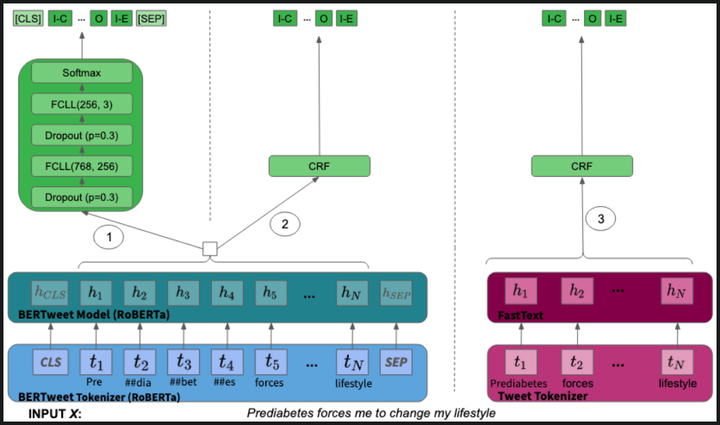Extraction of Explicit and Implicit Cause-Effect Relationships in Patient-Reported Diabetes-Related Tweets From 2017 to 2021: Deep Learning Approach
 Model architectures – Cause-effect identification
Model architectures – Cause-effect identification
Abstract
Background – Intervening in and preventing diabetes distress requires an understanding of its causes and, in particular, from a patient’s perspective. Social media data provide direct access to how patients see and understand their disease and consequently show the causes of diabetes distress.
Objective – Leveraging machine learning methods, we aim to extract both explicit and implicit cause-effect relationships in patient-reported diabetes-related tweets and provide a methodology to better understand the opinions, feelings, and observations shared within the diabetes online community from a causality perspective.
Methods – More than 30 million diabetes-related tweets in English were collected between April 2017 and January 2021. Deep learning and natural language processing methods were applied to focus on tweets with personal and emotional content. A cause-effect tweet data set was manually labeled and used to train (1) a fine-tuned BERTweet model to detect causal sentences containing a causal relation and (2) a conditional random field model with Bidirectional Encoder Representations from Transformers (BERT)-based features to extract possible cause-effect associations. Causes and effects were clustered in a semisupervised approach and visualized in an interactive cause-effect network.
Results – Causal sentences were detected with a recall of 68% in an imbalanced data set. A conditional random field model with BERT-based features outperformed a fine-tuned BERT model for cause-effect detection with a macro recall of 68%. This led to 96,676 sentences with cause-effect relationships. “Diabetes” was identified as the central cluster followed by “death” and “insulin.” Insulin pricing–related causes were frequently associated with death.
Conclusions – A novel methodology was developed to detect causal sentences and identify both explicit and implicit, single and multiword cause, and the corresponding effect, as expressed in diabetes-related tweets leveraging BERT-based architectures and visualized as cause-effect network. Extracting causal associations in real life, patient-reported outcomes in social media data provide a useful complementary source of information in diabetes research.